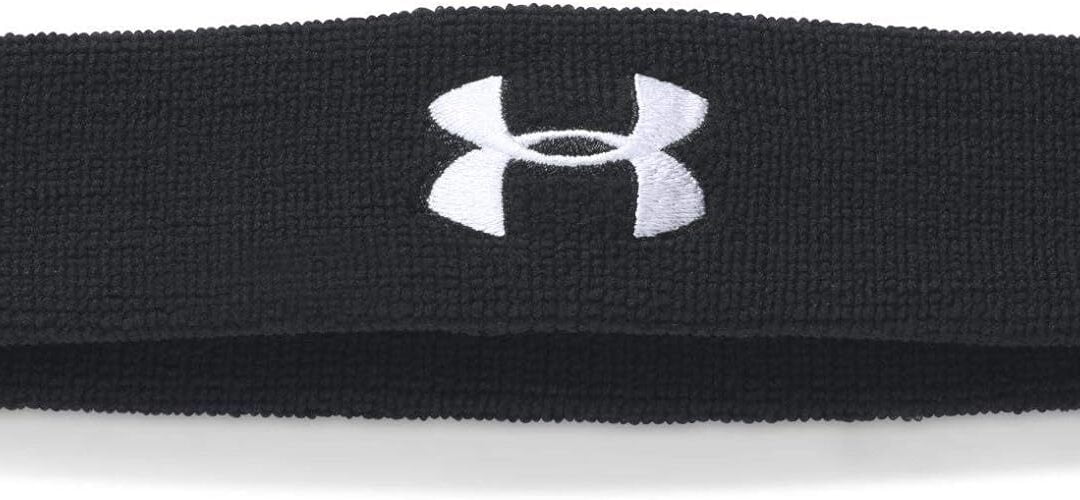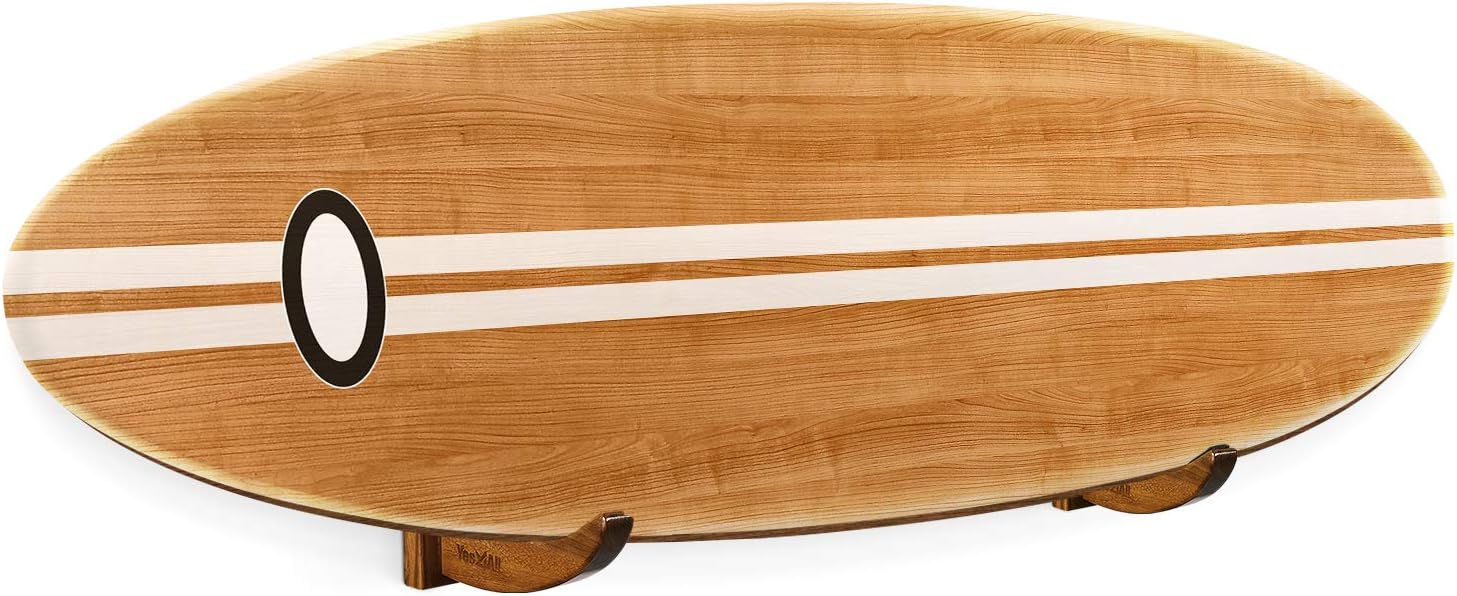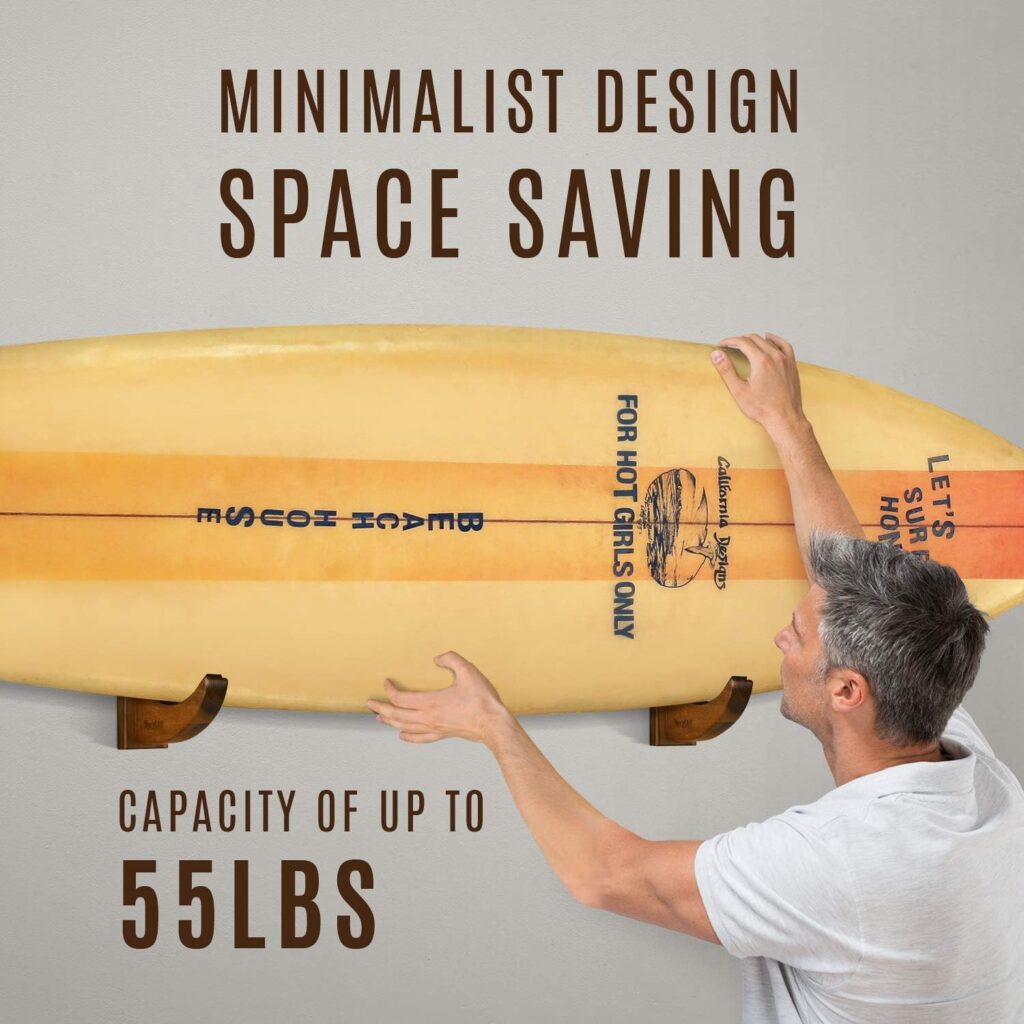Discover the benefits of sweatbands for your fitness routine. Enhance your performance and stay comfortable with these stylish and functional accessories.


Surfing is not just a sport; it’s a way of life. From the moment you paddle out to catch your first wave, you become part of a community that shares a deep love and respect for the ocean. And what better way to connect with the ocean than by riding a wood surfboard? In this article, we will explore the beauty and benefits of wood surfboards, and why they are gaining popularity among surfers of all levels.
Wood surfboards have a rich history that dates back to ancient Polynesia. The first surfboards were made from solid wood, typically from trees like koa or wiliwili. These boards were heavy and required great skill to maneuver in the water. However, they provided a smooth and stable ride, allowing surfers to glide effortlessly across the waves.
As surfing spread to other parts of the world, new materials like fiberglass and foam were introduced, making surfboards lighter and more maneuverable. Wood surfboards fell out of favor for a time, but in recent years, there has been a resurgence of interest in these traditional boards.
One of the main reasons why surfers are drawn to wood surfboards is their undeniable beauty. Each board is a work of art, crafted by skilled artisans who carefully select and shape the wood to create a unique and visually stunning surfboard. The natural grain and color variations of the wood give each board its own character, making it a true one-of-a-kind piece.
Wood surfboards also age gracefully, developing a rich patina over time. This adds to their charm and makes them even more special to their owners. Unlike mass-produced fiberglass boards, wood surfboards have a soul and a story, connecting the surfer to the craft and tradition of surfing.
Another reason why wood surfboards are gaining popularity is their eco-friendly nature. Traditional surfboards are made from non-biodegradable materials like foam and fiberglass, which can take hundreds of years to decompose. In contrast, wood is a renewable resource that can be sustainably harvested and used to create surfboards with minimal environmental impact.
Wood surfboards are also more durable than their foam and fiberglass counterparts. They can withstand the rigors of surfing without the need for constant repairs or replacement. This means less waste in landfills and a longer lifespan for each board.
Wood surfboards are not just beautiful; they also offer exceptional performance in the water. The weight and density of the wood give these boards a unique feel and responsiveness that is unmatched by foam and fiberglass boards.
The added weight of a wood surfboard allows it to glide effortlessly across the water, providing a smooth and stable ride. The natural flex of the wood also absorbs vibrations, making for a more comfortable and enjoyable surfing experience. Surfers often describe riding a wood surfboard as a connection with the wave, feeling every movement and energy transfer.

There are several types of wood that are commonly used in the construction of surfboards. Each type has its own characteristics and performance benefits. Here are some of the most popular choices:
Paulownia wood is lightweight and has excellent strength-to-weight ratio, making it a popular choice for wood surfboards. It is also known for its natural resistance to rot and water damage, making it ideal for use in the ocean.
Cedar wood is prized for its natural oils, which provide a high level of water resistance. It is also known for its beautiful grain patterns and rich color variations.
Balsa wood is one of the lightest woods available, making it a popular choice for high-performance surfboards. It offers excellent buoyancy and responsiveness in the water.
Spruce wood is known for its strength and durability. It is often used in the construction of longboards and big wave surfboards, where extra stability and control are required.
Wood surfboards require a little extra care compared to foam and fiberglass boards. Here are some tips to keep your wood surfboard in top condition:
After each surf session, rinse your surfboard with fresh water to remove any salt or sand that can cause damage over time.
Avoid leaving your surfboard in direct sunlight or a hot car, as excessive heat can warp the wood. Instead, store it in a cool and dry place where it can dry properly.
Regularly oiling your wood surfboard helps to maintain its moisture content and protect it from drying out. Repair Scratches and Dings

If you’re interested in getting a surfboard for yourself, there are several options available. Many surfboard shapers and craftsmen specialize in creating custom wood surfboards, tailored to your specific preferences and riding style.
You can also find a variety of surfboards online, through websites that specialize in handmade and artisanal surfboards. These boards may be more expensive than mass-produced foam and fiberglass boards, but they are worth the investment for their beauty, performance, and environmental benefits.
One of the most fascinating aspects of surfboards is the craftsmanship that goes into creating them. Unlike mass-produced foam and fiberglass boards, surfboards are meticulously crafted by skilled artisans who take pride in every detail.
Each wood surfboard starts with carefully selected pieces of wood. The wood is then cut and shaped to create the desired outline and rocker. The process requires precision and attention to detail to ensure that the board performs well in the water.
Once the basic shape is formed, the board is meticulously sanded to create a smooth and seamless surface. The wood’s natural grain is showcased and enhanced during this process, adding to the board’s beauty and uniqueness.
After the sanding is complete, the board is sealed with a waterproof finish to protect it from the elements. This finish also enhances the wood’s natural color and grain, giving the board a stunning and polished appearance.
The craftsmanship of wood surfboards is a true labor of love. Each board is handcrafted and takes many hours to complete. The attention to detail and skill involved in the process is evident in the final product, making wood surfboards true works of art.
Wood surfboards are not just for display; they are designed to be ridden and can perform exceptionally well in the water. In fact, many surfers find that wood surfboards offer a unique and enjoyable riding experience.
surfboards are known for their stability and glide. The weight of the wood allows the board to maintain momentum and glide effortlessly across the water. This makes them a great choice for surfers of all levels, from beginners to experienced riders.
Wood surfboards also offer excellent maneuverability. Their natural flex allows for smooth and responsive turns, while their buoyancy allows for easy paddling and wave catching. The combination of stability and maneuverability makes wood surfboards versatile and suitable for a wide range of wave conditions.
Whether you’re riding small, mellow waves or big, powerful breaks, a surfboard can provide a fun and rewarding surfing experience. Its unique characteristics and performance benefits make it a great addition to any surfer’s quiver.
As surfers become more conscious of the environmental impact of their equipment, the demand for sustainable and eco-friendly surfboards continues to grow. surfboards are at the forefront of this movement, offering a natural and renewable alternative to traditional foam and fiberglass boards.
With advancements in technology and the use of modern construction techniques, surfboards are becoming even more durable, lightweight, and high-performing. Surfers are discovering that wood surfboards can rival their foam and fiberglass counterparts in terms of performance and ride quality.
As the popularity of surfboards continues to rise, more surfboard shapers and craftsmen are embracing this traditional craft. They are pushing the boundaries of design and innovation, creating surfboards that are not only functional but also visually stunning.
surfboards are not just a trend; they are a timeless and sustainable choice for surfers who want to connect with the ocean in a meaningful way. With their beauty, performance, and environmental benefits, wood surfboards are here to stay.
1. Beauty: Wood surfboards are visually stunning and each board is a unique work of art due to the natural grain and color variations of the wood.
2. Environmental sustainability: Wood is a renewable resource that can be sustainably harvested, making wood surfboards a more eco-friendly choice compared to foam and fiberglass boards.
3. Durability: Wood surfboards are known for their durability and can withstand the rigors of surfing without the need for constant repairs or replacement.
4. Performance: The weight and density of surfboards give them a unique feel and responsiveness in the water. They provide a smooth and stable ride, and the natural flex of the wood absorbs vibrations for a more comfortable experience.
5. Connection to surfing tradition: surfboards have a rich history that dates back to ancient Polynesia, and riding a wood surfboard allows surfers to connect to the craft and tradition of surfing.

1. Cost: Wood can be more expensive than mass-produced foam and fiberglass boards due to the craftsmanship involved in their creation.
2. Weight: Wood surfboards tend to be heavier than foam and fiberglass boards, which may require more effort to carry and maneuver in the water.
3. Maintenance: Wood surfboards require more care and maintenance compared to foam and fiberglass boards. They need to be rinsed and dried properly after each use, and regular oiling is necessary to maintain their moisture content.
4. Limited availability: Wood may be harder to find compared to foam and fiberglass boards, as they are often handmade and require specialized craftsmanship.
– “I recently purchased a wood surfboard and it has completely changed my surfing experience. The board glides effortlessly across the water and the craftsmanship is truly stunning.” – Sarah C.
– “I love the beauty and soul of my wood . It’s an absolute pleasure to ride and I feel a deep connection to the ocean when I’m on it.” – Jake R.
– “Switching to a surfboard was the best decision I ever made. It offers a unique feel and ride quality that I can’t find with foam or fiberglass boards. Plus, it’s better for the environment!” – Emily T.
Q: Are wood more fragile than foam and fiberglass boards?
A: While wood do require proper care and maintenance, they are generally quite durable and can withstand the rigors of surfing.
Q: Do surfboards perform well in all types of waves?
A: Wood surfboards can perform well in a variety of wave conditions, but they are especially suited for smaller, slower waves where their stability and glide really shine.
Q: Can I repair scratches or dings on a surfboard?
A: Yes, scratches and dings on wood can be repaired using wood filler or epoxy resin. It’s important to address any damage promptly to prevent water damage.
Q: Can I customize the design of a surfboard?
A: Yes, many wood surfboard craftsmen offer custom design options, allowing you to personalize your board to your preferences and style.

Wood surfboards offer a unique blend of art and performance, making them an enticing choice for surfers of all levels. Their beauty, environmental sustainability, durability, and exceptional performance in the water make them a worthwhile investment for those looking to enhance their surfing experience. While surfboards may require more care and maintenance, their connection to the history and tradition of surfing adds an extra layer of soul to each ride. So, if you’re seeking a surfboard that is as beautiful as it is functional, consider giving a wood surfboard a try.
Wood surfboards offer a unique blend of art and performance that is hard to find in any other surfboard. From their rich history and timeless beauty to their eco-friendly nature and exceptional ride quality, surfboards have captured the hearts of surfers around the world.
Whether you’re a seasoned surfer looking to add a new dimension to your surfing experience or a beginner eager to ride a board that is as beautiful as it is functional, a surfboard is a fantastic choice.
Investing in a wood surfboard not only supports the craftsmanship and tradition of the sport but also helps protect the environment. With their renewable materials and long lifespan, surfboards are a sustainable alternative to traditional foam and fiberglass boards.
So, if you’re ready to take your surfing to the next level and experience the beauty and performance of a wood surfboard, don’t hesitate. Find a reputable surfboard shaper or browse online for a handmade surfboard that suits your style and preferences.
Once you paddle out on a surfboard and feel the connection with the ocean, you’ll understand why so many surfers are choosing wood over other materials. It’s a feeling that can only be described as pure joy and a true celebration of the art and sport of surfing.
Wood surfboards are more than just surfboards; they are works of art that connect surfers to the history and tradition of the sport. With their beauty, performance, and environmental benefits, it’s no wonder that wood surfboards are making a comeback in the surfing community. So, if you’re looking to elevate your surfing experience and ride a board that is as unique as you are, give a surfboard a try. You won’t be disappointed.